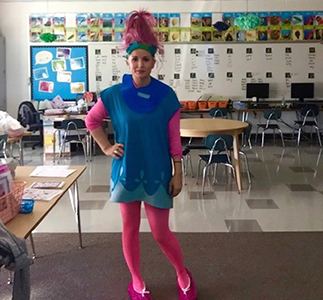Teach
Helping educators build developmentally appropriate practices
Our assets-based instructional resources are built on the foundation of the WIDA Language Development Standards and enriched by practitioner feedback. In combination with assessment information and WIDA professional development, our teaching tools can enhance your instruction of multilingual learners.
- WIDA originated the Can Do Philosophy, an assets-based approach to learners
- WIDA teaching tools highlight content and language integration
- WIDA offers language development standards in English and Spanish
WIDA's Can Do Philosophy
Working with multiple education partners, WIDA developed the Can Do Philosophy – an approach that transforms the conversation from what learners can’t do to what they can do. By shifting from a focus on deficits to a focus on assets, together we send a powerful message: that multilingual learners and their families enrich our PreK – 12 schools.
Watch the brief video below for an overview of our philosophy,
then read The WIDA Can Do Philosophy to learn more about multilingual learners' assets, contributions and potential.
- Video Transcript
The can-do philosophy permeates everything that we do at WIDA. Assessment, professional learning, standards. And bringing content and language together is always, always to build upon the assets that children have.
With anything that we do at WIDA, we're constantly thinking about how we can honor and not just celebrate. But really use the assets that children are bringing to the classroom.
Culturally, linguistic, cognitive, and academic. Kids come into our classrooms with many ways of knowing, many ways of learning. And many different experiences that can enrich what we're already doing.
Teachers bring to the classroom a lot of experiences also. And a lot of ways of knowing and doing things that also benefit the classroom.
Our can-do philosophy has many tools built around it. To help you understand and create language-rich, literacy-rich, and culturally appropriate classrooms. And it turns out those classrooms are good for all kids. They're engaging classrooms that work for every learner in your school. But they're particularly important for English language learners. Who need to learn English, but they also have to keep up with rigorous academic content.
We want to make sure that indeed, this can-do philosophy is very much a part of the educational fabric and is infused in everything we do. And you do.
Our can-do philosophy really exemplifies who we are as educators. And how our multilingual learners are indeed a tremendous resource. How their contributions, not only to teaching and learning, but to our educational communities. And to the world.
Key Instructional Resources for Can Do Learning

Can Do Descriptors – Key Uses Edition
Descriptors that highlight what early childhood and K-12 multilingual learners can do at various ages and stages of language development.

English Language Development Standards Framework
A framework that provides a foundation for curriculum, instruction and assessment for multilingual learners in kindergarten through grade 12.

Teaching in PreK-3
A developmentally sound framework for providing quality care and instruction to young multilingual children in early care and education settings.

Teaching en español
WIDA resources offer a comprehensive system to support the teaching and assessment of language arts and Spanish language development.





